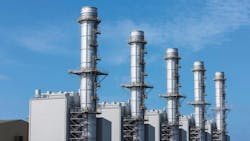Sixteen months ago, I wrote about the conflicting issues surrounding the value of electric vehicles in reducing greenhouse gas emissions vs. the environmental damage done by mining the lithium (and other natural resources). Now a potential carbon capture and storage project in Wales is pitting its advocates against environmentalists.
The project involves building an underwater pipeline to carry CO2 from the Pembroke Power Station, one of the largest – and most efficient, utilizing state-of-the-art combined-cycle gas turbine technology – natural gas-fired power plants in Europe, to the Dragon LNG terminal. The power plant is located near the town of Pembroke, South West Wales, and the LNG terminal is in Waterston, Milford Haven, Pembrokeshire, Wales. The two sites, less than a mile apart as the crow flies, are separated by the Milford Haven Waterway. And therein lies the problem.
In 2002, the UK government designated the waterway as a Site of Special Scientific Interest (SSSI). The Milford Haven Waterway SSSI covers the entire Milford Haven Marine Character Area (MCA 21) which, according to Resources Wales, is “nationally important for its geology, ancient woodland, rare and scarce maritime plants as well as nationally important numbers of migratory waterfowl and otter”. MCA 21 is one of 29 MCAs dividing the inshore waters of Wales, with each area profile describing that area’s key characteristics.
The Pembroke project’s concept is to capture the power plant’s CO2 emissions and pump them under the waterway to the LNG terminal. There, the CO2 would be liquified and loaded onto tanker ships, which would transport it to be buried in empty oil and gas fields in the North Sea. Unfortunately, the waterway in not only a sensitive marine conservation area, it is also a major shipping lane.
RWE, the plant’s operator, has gained the approval of Natural Resources Wales to conduct a feasibility study for the project, but posting on X (formerly Twitter) on behalf of Friends of the Earth Cymru, Mike Childs, their “head of science, policy and research said he was "incredibly skeptical" over these proposals. Rather than using gas to create electricity we need to focus on renewable energy and types of energy storage.”
The contemplated Pembroke Power Station decarbonization project is part of the South Wales Industrial Cluster (SWIC) plan to achieve a 40% reduction in CO2 emissions in South Wales.
##########
A regular contributor to HPAC Engineering and a member of its editorial advisory board, the author is a principal at Sustainable Performance Solutions LLC, a south Florida-based engineering firm focusing on energy and sustainability. He can be reached at [email protected].
About the Author
Larry Clark
A member of HPAC Engineering’s Editorial Advisory Board, Lawrence (Larry) Clark, QCxP, GGP, LEED AP+, is principal of Sustainable Performance Solutions LLC, a South Florida-based engineering firm focused on energy and sustainability consulting. He has more than two dozen published articles on HVAC- and energy-related topics to his credit and frequently lectures on green-building best practices, central-energy-plant optimization, and demand-controlled ventilation.
